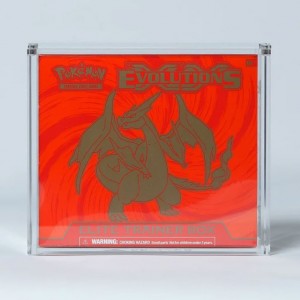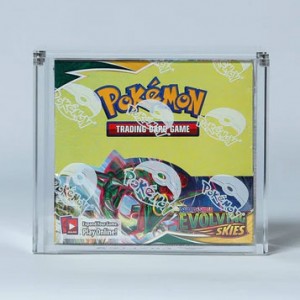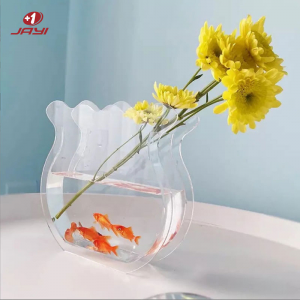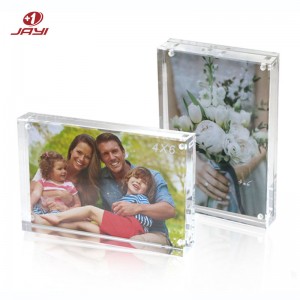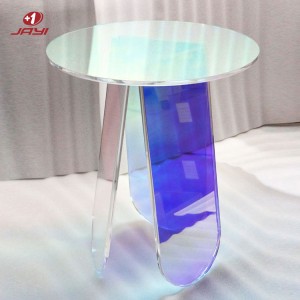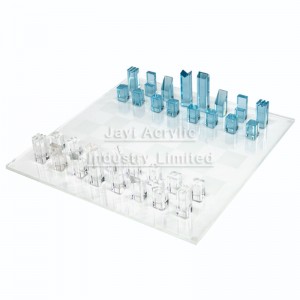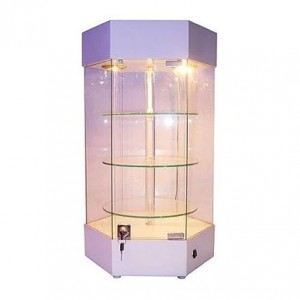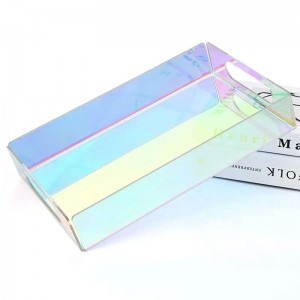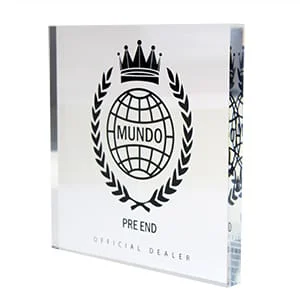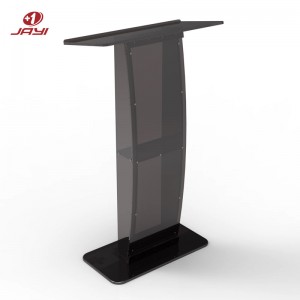
Whether you’re a collector showcasing rare action figures, a retailer highlighting premium products, or a homeowner displaying cherished memorabilia, the right acrylic display box can elevate your items while keeping them safe from dust, scratches, and damage.
But with so many sizes, styles, and configurations available, choosing the perfect fit often feels overwhelming. Pick a box too small, and your item will be cramped or impossible to fit; go too large, and it will look lost, failing to draw attention to what matters most.
In this guide, we’ll break down everything you need to know to pick the right size acrylic display box, from measuring your items to exploring style options that complement your display.
Determining the Right Size for Your Custom Acrylic Display Box

The foundation of choosing the right acrylic display box lies in precise measurement and understanding your display goals. Many people make the mistake of guessing sizes or relying on “standard” options without considering their specific items—and this often leads to disappointment. Let’s walk through the step-by-step process to ensure a perfect fit.
First, measure the item(s) you plan to display. Grab a tape measure and record three key dimensions: height, width, and depth. It’s crucial to measure the largest points of your item—for example, if you’re displaying a figurine with outstretched arms, measure from the tip of one arm to the other for width, not just the torso. If you’re displaying multiple items together, arrange them as you want them in the box and measure the entire grouping’s combined height, width, and depth. This prevents overcrowding and ensures each piece is visible.
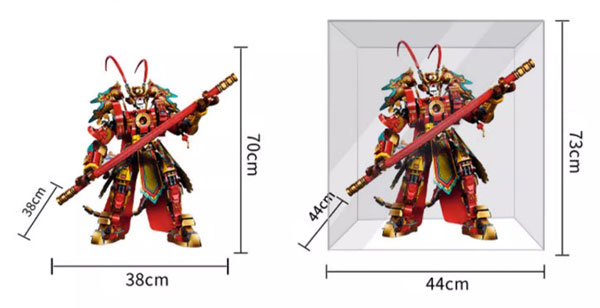
Next, add a “buffer” to your measurements. Acrylic display boxes need a small amount of extra space to easily insert and remove your items without scratching the acrylic or the item itself. A good rule of thumb is to add 0.5 to 1 inch to each dimension. For delicate items like glassware or vintage collectibles, err on the side of a larger buffer (1 inch) to avoid accidental damage during handling. If you’re displaying an item that needs to stand upright, double-check the height buffer—you don’t want the top of the item touching the lid, as this can cause pressure marks over time.
Consider the display location, too. The space where you’ll place the box will influence the maximum size you can choose. A shelf in a cabinet may have height restrictions, while a countertop might allow for a wider box. Measure the display area’s height, width, and depth as well, and ensure your box (plus any base you add later) fits comfortably with a little room around it for ventilation and aesthetics. A box that’s too big for its spot will look cluttered, while one that’s too small may get lost among other items.
Custom vs. standard sizes is another key consideration. Standard acrylic display boxes (like 4x4x6 inches or 8x8x10 inches) are great for common items like small figurines, jewelry, or business cards. They’re often more affordable and readily available. But if you have an irregularly shaped item—such as a large trophy, a vintage toy with unique proportions, or a grouping of items with varying sizes—a custom acrylic display box is worth the investment. Custom boxes are tailored to your exact measurements, ensuring a snug yet functional fit that highlights your item’s best features. Many manufacturers offer custom options online, with easy-to-use tools to input your dimensions and preview the final product.
Don’t forget about the box’s thickness, either. Acrylic thickness (measured in millimeters) affects both durability and internal space. Thicker acrylic (3mm or 5mm) is sturdier, making it ideal for heavy items or high-traffic areas (like retail stores). However, thicker acrylic takes up slightly more internal space—so if you’re working with tight measurements, you may need to adjust your buffer to account for the acrylic’s width. For lightweight items like paper memorabilia or small trinkets, 2mm acrylic is sufficient and saves on internal space.

Different Acrylic Display Box Groupings
Acrylic display boxes aren’t just for single items—grouping boxes can create a cohesive, eye-catching display that tells a story or showcases a collection. The key to successful grouping is balancing sizes, shapes, and the items inside to avoid a chaotic look. Let’s explore common grouping strategies and how to choose sizes for each.

Uniform grouping is perfect for collectors with multiple similar items, like a set of baseball cards, small succulents, or matching jewelry pieces. In this setup, you use identical-sized acrylic display boxes arranged in a grid, row, or column. For example, a collector of mini vinyl records might use six 3x3x5 inch boxes arranged in two rows of three. Uniform grouping creates a clean, minimalist look that draws attention to the items rather than the boxes. When choosing sizes for uniform groupings, measure the largest item in the set and use that as the base dimension—this ensures all items fit, even if some are smaller. Add a small buffer as usual, and opt for the same acrylic thickness across all boxes for consistency.
Graduated grouping uses boxes of varying sizes to create a visual hierarchy. This works well for displaying items of different heights or importance—for example, a retailer showcasing a line of skincare products, with the largest product (like a body lotion) in an 8x6x10 inch box, medium-sized serums in 6x4x8 inch boxes, and small samples in 4x3x5 inch boxes. Arrange the largest box in the center or at the back, with smaller boxes around it to guide the eye. Graduated grouping adds depth and interest to your display, but it’s important to keep the proportions balanced—avoid using boxes that are drastically different in size. Keep in mind that items being displayed together must have varying heights to create an optimal viewing experience. If you are looking to elevate some of these items consider using an acrylic riser, stand, or easel to help create a staggered look.
Thematic grouping combines boxes of different sizes that share a common theme, like a travel memorabilia display with a 5x5x7 inch box for a souvenir mug, a 3x3x5 inch box for a postcard collection, and a 6x4x8 inch box for a small snow globe. When choosing sizes for thematic groupings, prioritize the most important or largest item first—this will be your “anchor” box. Then select smaller boxes that complement it without overwhelming the display. For example, if your anchor box is 7x5x9 inches, choose smaller boxes in the 3-6 inch range for secondary items. This keeps the display cohesive while allowing each item to shine.
Wall-mounted vs. tabletop groupings also influence size choices. Wall-mounted acrylic display boxes are great for saving space, but they’re limited by weight and wall stud placement. Smaller boxes (4x4x6 inches or smaller) are easier to mount and less likely to damage walls. Tabletop groupings can include larger boxes, but you still need to consider the surface’s weight capacity—acrylic is lightweight, but larger boxes (10x8x12 inches or bigger) filled with heavy items (like rocks or metal collectibles) can strain delicate surfaces. Always check the weight limit of your display surface before choosing large boxes.
Different Box Bases for a Unique Look
While the size of your acrylic display box is crucial for functionality, the base can elevate its aesthetics and make your items stand out even more. Bases add color, texture, and contrast, turning a simple display box into a decorative piece. Below are the most popular base options, along with tips on how they pair with different box sizes and items.

1. Black Base
Black bases are a timeless choice that adds sophistication and contrast to almost any item. They work particularly well with light-colored items (like white figurines, silver jewelry, or pastel memorabilia) and dark-colored acrylic boxes, creating a sleek, modern look. Black bases are also forgiving—they hide dust and minor scratches better than lighter bases, making them ideal for high-traffic areas or items that are handled frequently.
When pairing a black base with your acrylic display box, size matters. For small boxes (4x4x6 inches or smaller), a thin black base (0.25-0.5 inches thick) is best—thicker bases can overwhelm the box and the item inside. For larger boxes (8x8x10 inches or bigger), a thicker base (0.5-1 inch thick) adds stability and balances the box’s size. Black bases are versatile across all grouping styles—they look great in uniform groupings (creating a monochromatic look) or graduated groupings (adding a consistent element to varying sizes).
2. White Base
White bases are perfect for creating a bright, clean, and airy display—ideal for items that need to feel fresh or minimalist, like wedding favors, white porcelain, or botanical specimens. They pair beautifully with clear acrylic boxes and light-colored items, but they can also make dark-colored items (like black action figures or brown leather accessories) pop with contrast. White bases are popular in retail settings, as they make products look more polished and approachable.
For small to medium boxes (3x3x5 inches to 7x5x9 inches), a white base with a slight texture (like a matte finish) adds depth without being distracting. For larger boxes (10x8x12 inches or bigger), a smooth white base is better—textured bases can look busy when paired with a large display. Keep in mind that white bases show dust more easily than black ones, so they’re best for low-traffic areas or items that are cleaned regularly. They also work well in thematic groupings with a “light” or “minimalist” theme.
3. Mirror Base
Mirror bases add glamour and depth to any display, making them perfect for luxury items like jewelry, watches, or high-end collectibles. The mirror reflects the item, creating the illusion of more space and highlighting intricate details (like the back of a necklace or the engravings on a trophy). Mirror bases work best with clear acrylic boxes, as colored boxes can tint the reflection and dull the effect.
When choosing a mirror base for your acrylic display box, match the base’s size to the box’s bottom dimensions exactly—this ensures a seamless look and prevents the mirror from peeking out from the sides. For small boxes (4x4x6 inches), a thin mirror base (0.125 inches thick) is sufficient; for larger boxes (8x8x10 inches or bigger), a thicker mirror (0.25 inches) adds stability and prevents warping. Mirror bases are great for graduated groupings, as the reflections add visual interest to varying box sizes. However, they’re more fragile than other bases, so avoid using them in high-traffic areas or with young children around.
4. Wood Base
Wood bases add warmth, texture, and a natural touch to acrylic display boxes—ideal for items like vintage toys, handmade crafts, or rustic home decor. They come in a variety of finishes (oak, pine, walnut, and painted options) to match any style, from farmhouse to mid-century modern. Wood bases pair well with both clear and colored acrylic boxes, and they’re durable enough for high-traffic areas.
For small boxes (3x3x5 inches), a narrow wood base (slightly smaller than the box’s bottom) creates a subtle, elegant look. For medium to large boxes (6x4x8 inches to 12x10x14 inches), a wood base that’s the same size as the box’s bottom (or slightly larger, by 0.5 inches on each side) adds stability and makes a bold statement. Wood bases are perfect for thematic groupings with a “natural” or “vintage” theme—for example, a collection of handmade candles in 5x5x7 inch boxes on oak bases. They also work well in uniform groupings, as the wood’s texture breaks up the monotony of identical boxes.
5. Color Base
Color bases are a fun, playful option for adding personality to your display—ideal for kids’ rooms, party favors, or brand-specific displays (like a retail store with a signature color). They come in every hue imaginable, from bright reds and blues to soft pastels and neon shades. Color bases work best when paired with clear acrylic boxes and items that complement or contrast with the base color—for example, a yellow base with blue toys, or a pink base with white jewelry.
When using color bases, keep the box size in mind to avoid clashing. For small boxes (4x4x6 inches), bright or neon colors can make a bold statement without being overwhelming. For larger boxes (8x8x10 inches or bigger), softer pastel colors are better—bright colors on large bases can distract from the item inside. Color bases are great for graduated groupings, as you can use different shades to create an ombre effect or match the base color to the item inside each box. They’re also popular for holiday displays—for example, red and green bases for Christmas ornaments in 5x5x7 inch boxes.
FAQs

What if my item has an irregular shape—how do I measure for the right box size?
For irregularly shaped items (e.g., curved sculptures, vintage toys with protruding parts), focus on measuring the “extreme dimensions”: the tallest point for height, the widest point for width, and the deepest point for depth. For example, a statue with a raised arm should be measured from the base to the arm’s tip (height) and from the arm’s tip to the opposite side (width). Add a 1-inch buffer instead of the standard 0.5 inches to accommodate uneven edges. If the shape is highly unique, many custom manufacturers accept photos or 3D scans to recommend precise sizes—this avoids ill-fitting boxes and ensures your item is both secure and visible.
Is a custom acrylic display box more durable than a standard one?
Durability depends on acrylic thickness, not whether it’s custom or standard. Both custom and standard boxes can be made with 2mm, 3mm, 5mm, or thicker acrylic. Standard boxes often come in pre-set thicknesses (e.g., 3mm for most sizes), while custom boxes let you choose thicker acrylic (e.g., 5mm) for heavy or delicate irregular items. The key difference is fit: a custom box eliminates empty space that can cause items to shift and scratch, adding indirect protection. If durability is a priority, opt for at least 3mm acrylic regardless of custom/standard, and specify thicker options for high-traffic or heavy-item use.
Can I use multiple bases for a grouped acrylic display box setup?
Yes, but consistency is key to avoiding a cluttered look. For uniform groupings (identical boxes), use the same base type (e.g., all black or all wood) to maintain cohesion—mixing bases here can distract from matching items. For graduated or thematic groupings, you can mix bases strategically: pair a mirror base with your largest “anchor” box (to highlight a focal item) and wood bases with smaller boxes (for warmth). Ensure base colors complement each other (e.g., navy and beige instead of neon pink and orange) and match the display’s theme. Avoid mixing more than 2-3 base types per grouping to keep the look intentional.
How do I account for the lid when measuring the height of an acrylic display box?
Most acrylic display boxes have lids that either sit on top (adding minimal height) or are hinged (integrated into the box’s total height). First, check the manufacturer’s specs: if the lid is “top-sitting,” add 0.25-0.5 inches to your total height measurement to ensure the lid closes properly. For hinged lids, the box’s listed height usually includes the lid, so focus on the internal height. When measuring your item, add the standard 0.5-1 inch buffer to its height—this ensures the item doesn’t touch the lid (preventing pressure marks) even when closed. If unsure, ask the manufacturer for internal vs. external height dimensions to avoid miscalculations.
Are there weight limits for acrylic display boxes, and how does size affect this?
Weight limits depend on acrylic thickness and box size. Small boxes (4x4x6 inches) with 2mm acrylic can hold 1-2 pounds (e.g., jewelry, postcards). Medium boxes (8x8x10 inches) with a 3mm acrylic handle, 3-5 pounds (e.g., figurines, small porcelain). Large boxes (12x10x14 inches) need 5mm+ acrylic to hold 6-10 pounds (e.g., trophies, large collectibles). Larger boxes with thin acrylic (2mm) risk warping under heavy weight, even if the item fits. Always check the manufacturer’s weight rating for your box size/thickness. For items over 10 pounds, opt for reinforced custom boxes with thicker acrylic or added supports to ensure long-term durability.
Final Thoughts
Choosing the right size acrylic display box doesn’t have to be a guessing game—it’s a combination of precise measurement, understanding your display goals, and considering how the box will fit into your overall setup. Start by measuring your items (and adding a buffer), then decide whether a standard or custom size is best. If you’re grouping boxes, use uniform, graduated, or thematic strategies to keep the display cohesive. Don’t forget to pair your box with a base that enhances your item’s aesthetics—black for sophistication, white for minimalism, mirror for glamour, wood for warmth, or color for personality.
Remember, the best acrylic display box is one that balances functionality and style. It should protect your items while making them stand out, whether they’re on a shelf at home, a counter in a retail store, or a wall in a gallery. By following the steps in this guide, you’ll be able to pick a box that not only fits your items perfectly but also boosts their visibility—whether to your family, customers, or online audience. And if you’re ever unsure, don’t hesitate to reach out to acrylic display box manufacturers—many offer free size consultations to help you find the perfect fit.
About Jayi Acrylic Industry Limited

Jayi Acrylic stands as a leading manufacturer of custom acrylic products in China, boasting over 20 years of rich experience in design and production. We specialize in delivering high-quality acrylic items, including various custom acrylic boxes and custom acrylic display boxes, along with comprehensive acrylic engineering solutions.
Our expertise spans from initial design conceptualization to precision manufacturing, ensuring each product meets strict quality standards. In order to meet the needs of customers in different industries, we also offer professional OEM and ODM services—tailoring solutions to specific branding and functional requirements.
For decades, we’ve cemented our reputation as a reliable partner, leveraging advanced technology and skilled craftsmanship to deliver consistent, premium acrylic products globally.
Have Questions? Get A Quote
Want to Know More About Acrylic Boxes?
Click the Button Now.
You Might Also Like Other Custom Acrylic Products
Post time: Nov-06-2025

